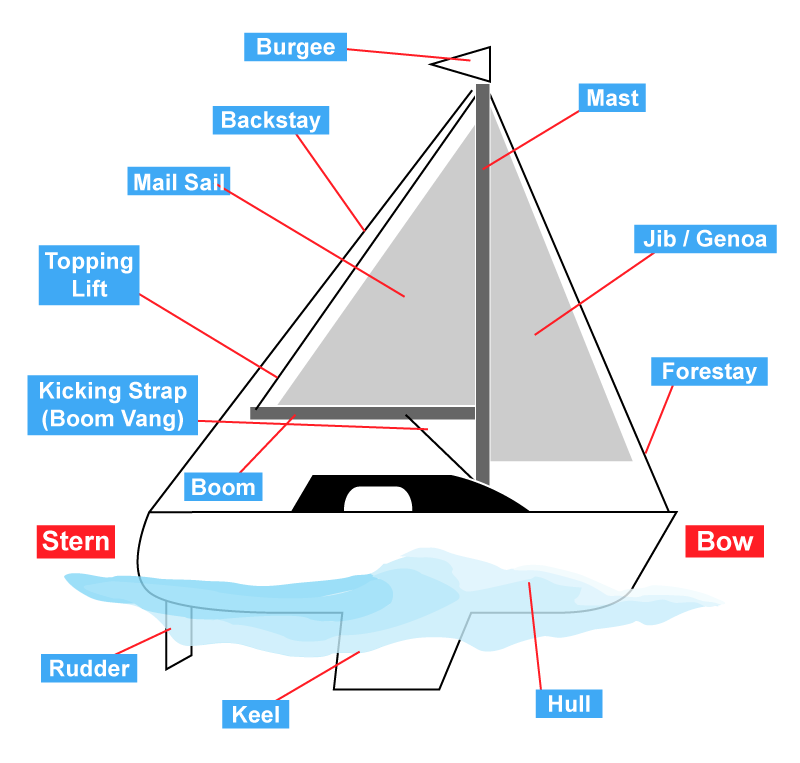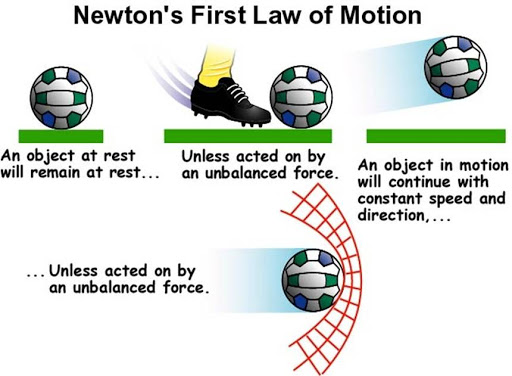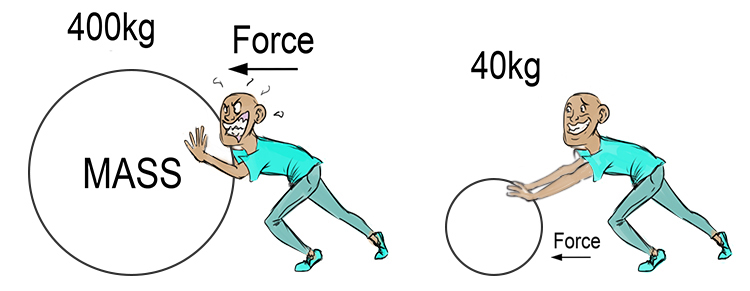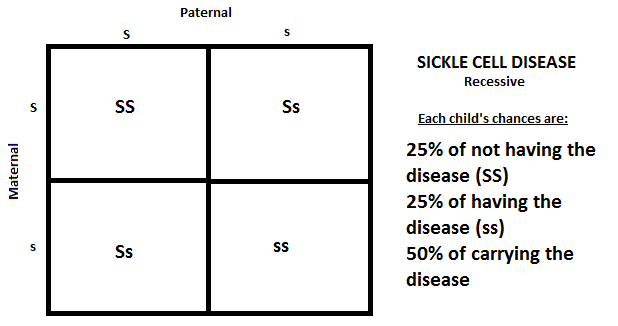10M2 Science
Section outline
-
Success Criteria: I can/have...
- Design and build a boat that can carry different cargo by calculating the density of different materials
Activities:
- Literacy: Waka origins and designs reading and answer questions in class
- Hands-on activity: Designing boats and figure out how to make them carry larger loads
- Numeracy: calculating density (first in an interactive programme and then applying it to your boat)
Density = mass / volume
Units
Density g/mL ..... Mass g ..... Volume mL
Homework:
You should have make your first prototypes, calculated their density and be ready to share your findings on Tuesday next week.
EXPLORE / TŪHURA learning intentions:
- We are EXPLORING boats by experimenting and observing how different boat designs are suited for purpos
- We are EXPLORING how boats move by calculating and investigating forces
-
Success Criteria
1) Calculate density, using appropriate units, of different liquids and solids
2) Explain how density affects an object's ability to float or sink
Activities
1) Education Perfect Task -- Density (assigned)
2) Create a density column with liquids and solids ... calculate the density of the substances
3) Apply your understanding of density to calculate the density of your boat (from last week) to explain why / how your homemade boat floats
4) Literacy and Practical activity -- Floating candy (see Google Classroom)EXPLORE / TŪHURA learning intentions:
- We are EXPLORING boats by experimenting and observing how different boat designs are suited for purpose
- We are EXPLORING how boats move by calculating and investigating forces
-
Success Criteria: I can/have...
- Identify forces that are related to moving objects, and apply them to their use on boats
- Measure forces and explain how these values influence movement
Activities:
- Intro to Forces -- brainstorm forces, research definitions and examples, create a reference poster to use later
- Investigate forces - learn how to use a force meter, measure the forces required to break string
- Investigation forces -- make a hovercraft (investigating lift and gravity) and pulley systems (investigating gravity)
Homework:
Upload your forces poster to Google ClassroomHow to use a force meter (Spring scale)
-
Success Criteria: I can/have...
- Calculate and measure forces and explain how these values influence movement
- Investigate and explain Newton's Laws of Motion
Activities:
1. Work through the Google Slides "Forces Information" and "Newton's Laws of Motion"
2. Complete the mini investigations/activities contained in the slides
3. Ed Perfect Work assigned
Homework:
Submit the "Forces Information" work and Ed Perfect tasks at a minimum.GOOGLE MEET on Thursday at 10 am. Refer to the invitation you would have received in your e-mail.
Link: meet.google.com/ers-ptfi-vwa
EXPLORE / TŪHURA learning intentions:
- We are EXPLORING boats by experimenting and observing how different boat designs are suited for purpose
- We are EXPLORING how boats move by calculating and investigating forces
-
Success Criteria: I can/have...
- Investigate and explain Newton's Laws of Motion
- First Law: Law of Inertia
- Second Law: Force = mass * acceleration
- Third Law: Forces come in pairs, having an equal and opposite reaction force

Activities:
1. Taking up lockdown homework
2. Introduction to Newton's Laws of Motion - notes and demonstration using pool
Homework:
Complete the Ed Perfect tasks at a minimum.EXPLORE / TŪHURA learning intentions:
- We are EXPLORING boats by experimenting and observing how different boat designs are suited for purpose
- We are EXPLORING how boats move by calculating and investigating forces
-
Success Criteria: I can/have...
- Investigate and explain Newton's Laws of Motion
- Calculating force and speed

Second Law

Third Law

Activities:
1. Newton's Laws of Motion investigations
2. Introduction to speed and motion graphs
EXPLORE / TŪHURA learning intentions:
- We are EXPLORING boats by experimenting and observing how different boat designs are suited for purpose
- We are EXPLORING how boats move by calculating and investigating forces
-
Learning Outcome:
Explore and describe the movement of objects.
Success Criteria:
1) Convert the units of time and distance
2) Calculate the speed of objects
3) Graph the speed of objects
4) Collect data and compare the movement of objects
Activities
1) Practical activity - Comparing speed using different modes of movement
2) Numeracy - displaying collected data as distance-time graphs and use the graphs to interpret the speed of objects
3) Practice problems - extra work on calculating speed and making distance-time graphs are posted to Google Classroom

FOCUS / ARONGA learning intentions:
- We are FOCUSING...on investigating and comparing the movement (eg. speed) of boats that we design
-
PLAN & DO / WHAKAMAHI learning intentions:
- We are PLANNING to design and construct a boat so that we can apply our understanding of forces and motion to moving objects
-
Welcome back to Term 2
Week 1 is designed to be a refresher on key chemistry concepts from Year 9.
Learning Outcomes
1) Describe the signs of a chemical reaction by observing and gathering data
2) Explain one chemical disaster in some detail, describing its impact on society and the environment
Activities
Practicals:
Observing, gathering data and drawing conclusions on chemical reactions (refer to Google Classroom for the activity)
Education Perfect:
Chemical Reactions module is assigned
Science Literacy:
Introduction to major chemical disasters (Chernobyl, Fukushima, Beirut) by completing a short online research study using your English skills
EXPLORE / TŪHURA learning intentions:
- We are EXPLORING... disasters in science by researching major events (eg. Chernobyl, Fukushima, Beirut)
- We are EXPLORING... disasters by experimenting and observing signs of chemical reactions so we can identify when a chemical reaction has occurred in society
- We are EXPLORING... lab safety so we interpret hazard symbols so we safely work with chemicals
-
Success Criteria
Research and investigate chemicals and chemical reactions to justify whether you believe a country should invest in nuclear energy.
Learning Outcomes1) Draw and label simple electron diagrams
2) Define and compare endothermic and exothermic reactions
3) Collect data to describe the effects of chemical reactions that are similar to what happens in a nuclear reactor
4) Understand the significance of many scientists and their ideas/theories and how they all are linked
5) Extension: Ionic and covalent bonding and how these are used to form molecules and compounds
Activities
Practical
Using molymods to compare elements with compounds
Endothermic and exothermic reactions - refer to Google Classroom for the instructions and template
Endothermic -- the reaction will feel cool (it is bringing in heat energy)
Exothermic -- the reaction will feel hot (it is releasing heat energy)

In-class activities
Atoms family activity - refer to Google Classroom
Education Perfect
None these weeks
Science Literacy
You will be working in partners in the library to gather information on varies aspect of chemistry and nuclear power plants. All the information will fit together like a puzzle.
- Marie Curie + radioactivity
- Nuclear energy
- Chernobyl
- Nuclear power plants (in basic terms how they work)
-
EXPLORE / TŪHURA learning intentions:
- We are EXPLORING... disasters in science by researching major events (eg. Chernobyl, Fukushima, Beirut)
- We are EXPLORING... disasters by experimenting and observing signs of chemical reactions so we can identify when a chemical reaction has occurred in society
- We are EXPLORING... lab safety so we interpret hazard symbols so we safely work with chemicals
-
Success Criteria
Research and investigate chemicals and chemical reactions to justify whether you believe a country should invest in nuclear energy.
Learning Intentions:
1) Identify reactants and products in a chemical reaction
2) Write simple word equations with the correct terminology to demonstrate your understanding of the reaction
3) Extension: Balance chemical equations
Activities:
Practicals
1) Chemical equations (two reactions) - refer to Google Classroom for the template and follow-up activity
Education Perfect
1) Chemical reactions modules assigned
Literacy
1) Science articles - refer to Google Classroom
2) Chernobyl - we will begin to watch the miniseries
FOCUS / ARONGA learning intentions:
- We are FOCUSING...on identifying and describing how chemicals react through experimentation to explain chemical disasters in society
- We are FOCUSING... our learning by discussing the negative impacts chemical disasters in the community have on society to develop an understanding of how politics play a role in science
-
Success Criteria:
1) Can identify elements and simple compounds involved in word equations
2) Can write simple word equations
3) Investigate rates of chemical reactions (write a simple method, collect and graph data, draw simple conclusions)
4) Describe how the rate of a reaction can be influenced
5) Extension: Can write balanced chemical equations using chemical formula
Activities:
1) Science Literacy - worksheets on naming compounds
2) EdPuzzle - learn about the ways you can influence chemical reactions (refer to Google Classroom)
3) Practical activity -- planning and investigating rates of reaction
4) In-class notes/discussion -- method writing and graphing
FOCUS / ARONGA learning intentions:
- We are FOCUSING...on identifying and describing how chemicals react through experimentation to explain chemical disasters in society
- We are FOCUSING... our learning by discussing the negative impacts chemical disasters in the community have on society to develop an understanding of how politics play a role in science
-
Success Criteria:
1) Report on an investigation (rate of reaction), explaining how to speed up or slow down a reaction using either temperature, catalysts, surface area or concentration
2) Work collaboratively to write a simple method, analyse data to produce a well labelled graph and draw detailed conclusions
Activities:
1) Practical activity -- investigating rates of reaction and presenting to the class
2) Group work - method writing and graphing
3) Literacy activities -- reading activities, graphing practice, following the scientific method (refer to the document below)4) Ed Perfect tasks -- Lab science skills
5) BrainPop -- Graphing video, quiz and activity
6) Chernobyl video
PLAN & DO / WHAKAMAHI learning intentions:
- We are PLANNING...to conduct rates of reaction experiments so that we can...demonstrate and share our knowledge to explain and justify how chemical disasters like Chernobyl could go wrong so quickly
-
Success Criteria
1. Identify how hormones (estrogen, progesterone, testoterone) play a role in puberty
2. Identify and describe the function of the female and male reproductive organs in humans, chickens and plants
3. Compare and contrast the reproductive organs from different species
Activities
Puberty
- In class discussion and notes on puberty and hormones

Reproductive organs in humans
- BrainPop video + quizzes (hormones and reproductive organs in humans)
- Ed Perfect information on the programs, online matching activity Male organs, in-class domino activity on parts and their function, cut and paste activity
Reproductive organs in plants
- Plant dissection to identify the reproductive parts
EXPLORE / TŪHURA learning intentions:
- We are EXPLORING...the human reproductive system so we can recognise how babies are produced
- We are EXPLORING...our traits so we can observe and connect our genes to those of our ancestors
-
Learning Intentions
We are exploring the human reproductive system to explain how babies are formed.
Success Criteria
1. Identify the route that sperm and eggs travel in the human reproductive tracts
2. Describe the stages of the menstrual cycle in humans using some detail
3. Explain the importance of the menstrual cycle to the process of reproduction
Activities
Week 3 - no lessons! (Tuesday is TOD, Thurs is Pasifika druming, Fri is FF (refer to Must Do / Can Do doc)
1. Menstrual Cycle Video + Quiz - assigned on BrainPop
2. Menstrual Cycle literacy activity -- use the knowledge gained from watching the video to complete these tasks. There is a fill in the blank, interpreting a diagram and answering question. Complete these activities in your science book.
CAT practice
1. Two tasks have been shared on Google Classroom with you. Work through and upload your answers for feedback.EXPLORE / TŪHURA learning intentions:
- We are EXPLORING...the human reproductive system so we can recognise how babies are produced
- We are EXPLORING...our traits so we can observe and connect our genes to those of our ancestors
-
ONLINE LEARNING
Learning Intentions
We are exploring cell division and DNA to explain how we are each unique.Success Criteria
1. Identify and describe the parts of cells (cell membrane, nucleus, cytoplasm, vacuole, mitochondria, cell wall, chloroplast)
2. Describe the relationship between nucleus, chromosome, gene, and DNA.
3. Describe the structure of DNA.
4. Explain in some detail the process of cell division (mitosis and meiosis).
5. Compare and contrast the significance of mitosis and meiosis for genetic variation (why we are all unique).
Extension: Make connections between DNA, mutations, genetic disorders and GMO foods (GLOBAL).
Extension: Compare and contrast the significance of mitosis and meiosis.
Activities
Week 5-- Refer to the Tic-Tac-Toe document for recapping cell parts + DNA posted in Google Classroom. There is a combination of literacy, interactive and hands-on activities posted to work through.
- Complete 2x activities for cell parts
- Complete 2x activities for DNA
TWO Google Meets (menstrual cycle + cell parts)
Week 6 -- Refer to the Tic-Tac-Toe document for cell division posted in Google Classroom. Again, there is a combination of literacy, interactive and hands-on activities.
- Complete 2x activities on mitosis
- Complete 2x activities on meiosis
TWO Google Meets (both on cell division)


FOCUS / ARONGA learning intentions:
- We are FOCUSING...on describing the cell division processes so we can explain why each individual is genetically unique
- We are FOCUSING...on clarifying what genetic traits are so we can discuss how genes are inherited
-
ONLINE LEARNING
Learning Intentions
We are exploring cell division and DNA to explain how we are each unique.Success Criteria
1. Explain in some detail the process of cell division (mitosis and meiosis) and when each process is required
2. Compare and contrast the significance of mitosis and meiosis for genetic variation (why we are all unique).
3. Describe key terms: inheritance, traits, dominant, recessive, allele,
Activities
Week 7 -- **Carry on from Week 6** Refer to the Tic-Tac-Toe document for cell division posted in Google Classroom. Again, there is a combination of literacy, interactive and hands-on activities.
- Complete 2x activities on mitosis
- Complete 2x activities on meiosis
TWO Google Meets (Tuesday - mitosis and Thursday - meiosis)

FOCUS / ARONGA learning intentions:
- We are FOCUSING...on describing the cell division processes so we can explain why each individual is genetically unique
- We are FOCUSING...on clarifying what genetic traits are so we can discuss how genes are inherited
-
Learning Intentions
We are exploring inheritance so we can understand why we look the way we do.Success Criteria
1. Use Punnett Squares to explain our appearance and how it was inherited from our parents
2. Describe key terms: inheritance, traits, dominant, recessive, allele, homozygous, heterozygous

Activities
Week 1 - NO ACTIVITIES ... you are working to complete your project
Week 2 - Wrap up Term 3 (Kahoot on what we have learned about genetics)
PLAN & DO / WHAKAMAHI learning intentions:
- We are PLANNING...to solve Punnett Squares so that we can... hypothesise how our superhero babies would looke
-
Learning Outcomes:
- We are EXPLORING...how to collect data and make observations to interpret how the earth's features are formed (eg. rocks)
Success Criteria
1) Collect scientific data from a range of sources (phones, outside, photos) to investigate the earth and its atmosphere
2) Identify, describe and compare three different types of rocks - igneous, sedimentary and metamorphic
3) Explain the rock cycle
Key words: igneous, sedimentary, metamorphic, weathering, erosion, sediment, deposition
Activities
Week 3
- Virtual field trip ... collecting outdoor data by collecting rocks and describing clouds
- Collect your own data for the assessment
- Group activity: Locate pictures of different types of rocks and sorting rocks by their appearance
Week 4
- Making rock models through baking! (Igenous: hokey pokey and Sedimentary: lolly cake)
- BONUS: Learn how to test if rocks have minerals (put them in vinegar... if the rocks form bubbles they contain minerals, causing a chemical reaction)
- BrainPop: Rock Cycle and Types of Rocks videos and quizzes
- Read the RockCylce Powerpoint
- Analyse your data for the assessment (due on Friday!)






EXPLORE / TŪHURA learning intentions:
- We are EXPLORING...how to collect data and make observations to interpret how the earth's features are formed (eg. rocks)
- We are EXPLORING... how to measure scientific data (eg. weather and climate) to connect its patterns with the earth's atmosphere
-
Learning Outcomes
- We are EXPLORING... how to measure scientific data (eg. weather and climate) to connect its patterns with the earth's atmosphere
Success Criteria1) Describe and name the layers of the atmosphere
2) Differentiate between climate, temperature and weather
3) Link weather patterns to different cloud shapes, sizes, colours and height
Keywords: troposphere, mesosphere, ionosphere, exosphere, stratosphere, ozone layer, climate change
Activities
Week 5
1) Art project - map out the layers of the atmosphere in a scaled version
2) Identifying clouds and how they link to their position in the atmosphere and weather (matching activities and interactive lesson)
Week 61) Reading weather maps
2) Investigate ways to measure the weather in the atmosphere by building our own tools
2) Article analysis: Climate change (global warming)
EXPLORE / TŪHURA learning intentions:
- We are EXPLORING...how to collect data and make observations to interpret how the earth's features are formed (eg. rocks)
- We are EXPLORING... how to measure scientific data (eg. weather and climate) to connect its patterns with the earth's atmosphere
-
Learning Outcomes
- We are FOCUSING... on how the weather is influenced by the temperature of the atmosphere's layers
- We are FOCUSING... on how to describe and read weather maps
Success Criteria1) Graph scientific data and draw conclusions about atmospheric temperatures
2) Relate atmospheric temperatures to weather patterns
3) Build weather tools
Keywords: ozone layer, Greenhouse Effect, Global Warming
Activities
Week 7
1) Graphing activity -- identify how the temperature changes in each layer of the atmosphere
2) Matching activity -- match the layer with its description
3) Article (read and answer questions): What is Global Warming and the Greenhouse Effect
4) Watch ONE of the "Our Planet" episodes on Netflix and write about how global warming is affecting wildlife on Padlet
Extra Reading: How does sunscreen work
Week 81) Investigate ways to measure the weather in the atmosphere by building our own tools
2) Learn how to read weather maps
FOCUS / ARONGA learning intentions:
- We are FOCUSING...on explaining how the weather is influenced by the temperature of the atmosphere's layers
- We are FOCUSING...on how to describe and read weather maps
